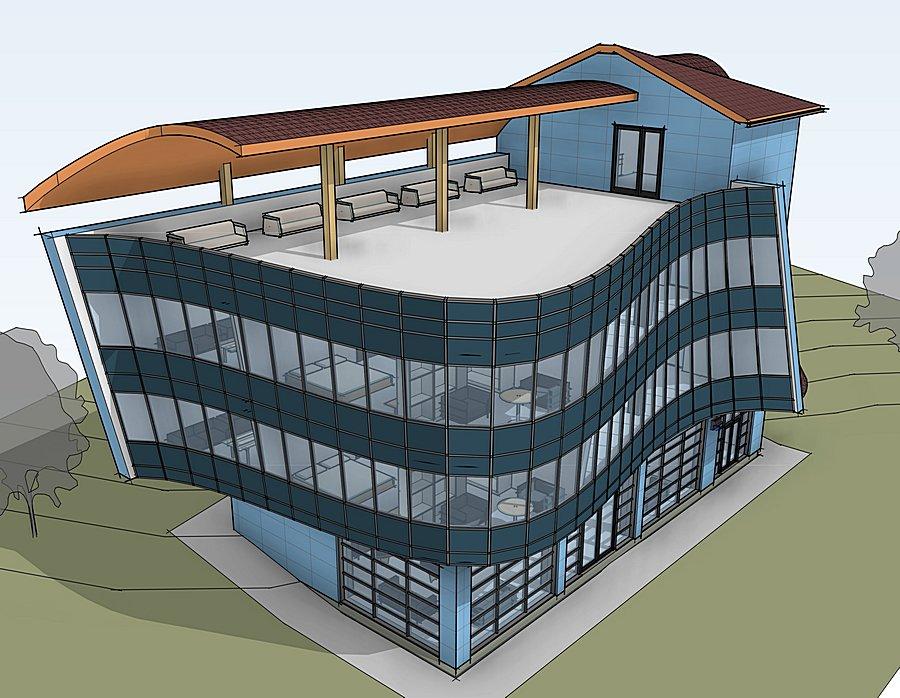Revit Architectural
Acura provides a Vast Range of Revit Architectural BIM Modeling Services to the clients globally, which utilizes the clients to visualize the project in a better way of understanding and minimize the conflict between clients and contractors.
The Revit Architectural services encompass the following
- Phase 1 Master plan
- Phase 1 Schematic Design
- Phase 1 Design Development
- Phase 1 Construction Documents
- Phase 1 Construction Administration

FAQ
1. What is Revit Architecture?
Revit Architecture is a Building Information Modeling (BIM) software developed by Autodesk for designing and managing architectural projects. It allows architects to create 3D models, coordinate designs, and generate construction documentation all within a single platform. Revit’s parametric design environment enables seamless integration and modifications, making it easier to manage and visualize every aspect of an architectural project.
2. Why is Revit Architecture important for architectural design?
Revit Architecture offers several advantages that make it an essential tool for modern architectural design:
- BIM Integration: Revit is built on BIM, allowing for the creation of a fully coordinated, digital representation of a building, including its geometry, structure, and systems.
- Efficiency: Revit helps speed up the design process by automating many tasks such as generating floor plans, sections, and elevations from the 3D model.
- Accuracy: The software’s parametric modeling allows for accurate, real-time updates. Changes made to one part of the model automatically propagate throughout the entire project, ensuring consistency and reducing errors.
- Collaboration: Revit facilitates team collaboration by enabling multiple users to work on the same project simultaneously. This makes communication between architects, engineers, and contractors more efficient.
- Visualization: Revit allows for 3D visualization of designs, helping clients, stakeholders, and team members understand the building before it’s constructed.
- Documentation: It automatically generates detailed construction drawings and schedules from the model, saving time and ensuring accuracy in documentation.
3. What services are included in Revit Architectural services?
Revit Architectural services typically include a variety of offerings that support the design, visualization, and documentation of architectural projects:
- 3D Architectural Modeling: Creation of a detailed 3D model of the building, including walls, roofs, floors, windows, doors, and other structural elements.
- 2D Drafting and Documentation: Generating detailed floor plans, elevations, sections, and other technical drawings required for construction.
- BIM Coordination: Ensuring that architectural models are fully coordinated with other building systems (MEP, structure) to prevent clashes and ensure seamless integration.
- 3D Rendering and Visualization: Providing high-quality rendered images and walkthroughs of the architectural model for presentations and client reviews.
- Building Design and Layout: Designing the layout of the building, including spatial arrangement, interior design, and building functionality.
- Construction Documentation: Generating detailed and accurate construction documentation, including schedules, material specifications, and drawings for contractors.
- Revit Family Creation: Creating custom Revit families (e.g., windows, doors, furniture, fixtures) that match the specific needs of the project.
- Project Planning and Scheduling: Assisting with planning, scheduling, and managing project timelines using Revit’s BIM tools for better workflow coordination.
4. What are the benefits of using Revit for architectural design?
Some of the key benefits of using Revit in architectural design include:
- Improved Collaboration: Teams can collaborate on the same model in real-time, ensuring everyone is working with the most up-to-date information.
- Faster Design Process: Revit’s automated tools streamline the design and drafting process, allowing for faster generation of drawings and documentation.
- Real-Time Changes: Any modifications made to the model are automatically reflected across all related views, ensuring that changes are always consistent.
- Comprehensive Project Visualization: With Revit, architects can create realistic 3D models, walkthroughs, and renderings that offer a clear picture of the final product.
- Better Decision Making: The ability to visualize, simulate, and analyze designs in 3D helps architects, engineers, and clients make more informed decisions throughout the design process.
- Cost and Resource Management: Revit helps with material quantity takeoffs and cost estimates by automatically generating schedules and lists directly from the 3D model.
- Sustainability Analysis: Revit includes tools that support sustainable design, such as energy modeling and environmental analysis, to help optimize a building’s performance.
5. What types of projects benefit from Revit Architectural services?
Revit Architectural services are beneficial for a wide range of projects, including:
- Residential Buildings: Single-family homes, multi-family housing, and residential complexes.
- Commercial Buildings: Offices, retail spaces, restaurants, and shopping malls.
- Educational Institutions: Schools, colleges, and universities with complex spatial arrangements.
- Healthcare Facilities: Hospitals, clinics, and healthcare centers that require specialized design and coordination.
- Civic Buildings: Government offices, libraries, and cultural institutions.
- Mixed-Use Developments: Projects that combine residential, commercial, and recreational spaces in one development.
- Industrial Projects: Factories, warehouses, and distribution centers that require efficient space planning and functionality.
- Renovation and Retrofit Projects: Revit is often used to model and visualize existing buildings for renovation or retrofit, ensuring that the changes are well-integrated.
6. How much does Revit Architectural Services cost?
The cost of Revit Architectural services varies depending on the scope and complexity of the project, as well as the experience of the service provider. Factors affecting cost include:
- Project Size and Complexity: Larger, more complex projects requiring extensive modeling, detailing, and documentation will generally be more expensive.
- Service Type: Services like 3D modeling, rendering, and BIM coordination may have different pricing compared to simple drafting or documentation.
- Location: Pricing may vary based on the location of the service provider, as rates tend to be higher in areas with a higher cost of living.
- Timeline: Rush jobs or projects with tight deadlines may incur additional costs.
On average, Revit architectural services can range from $50 to $150 per hour, with larger projects costing anywhere from $5,000 to $50,000 or more, depending on the scope.
Get In Touch
Contact us today to discuss your project needs and discover how we can support your goals.
